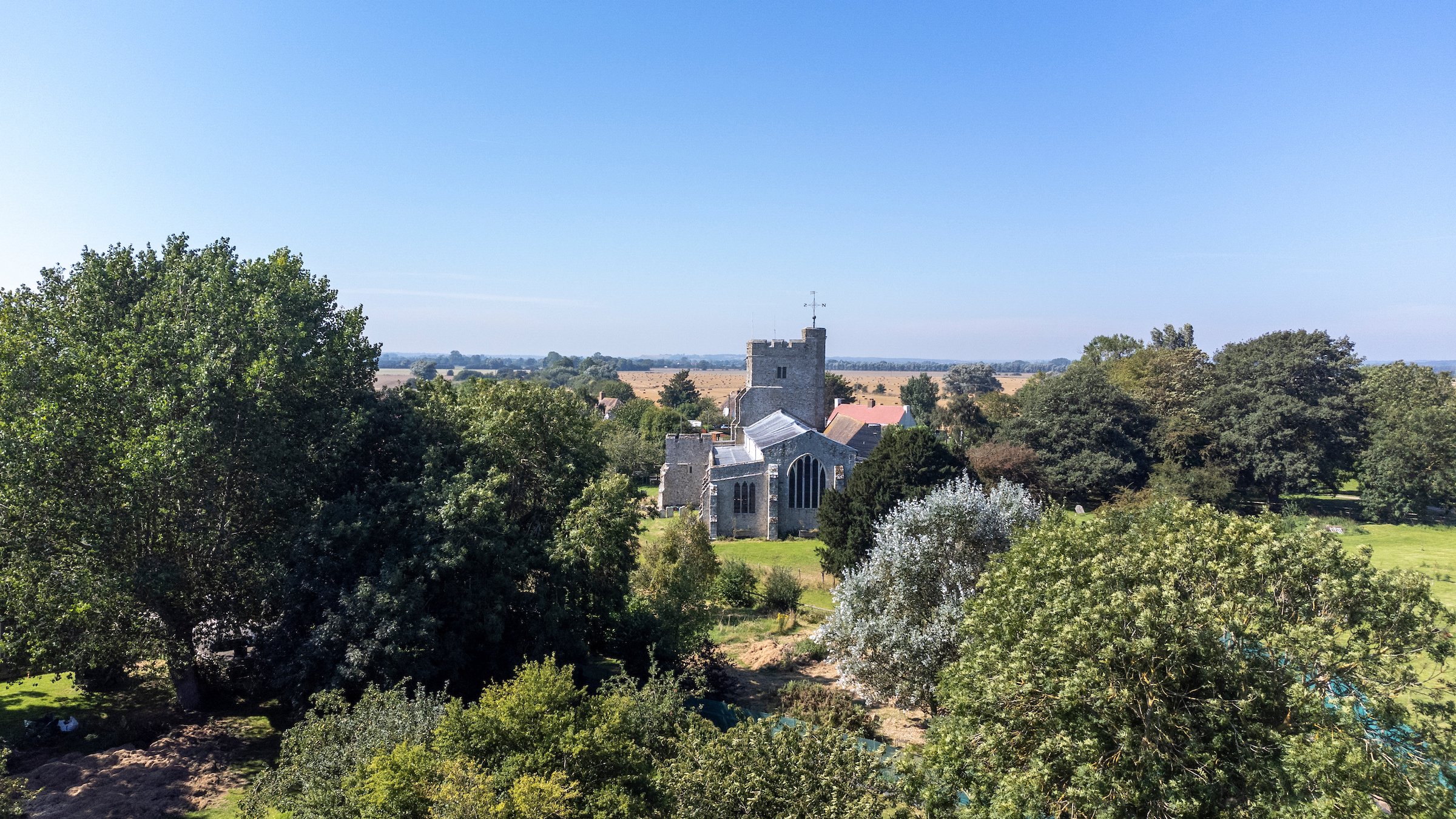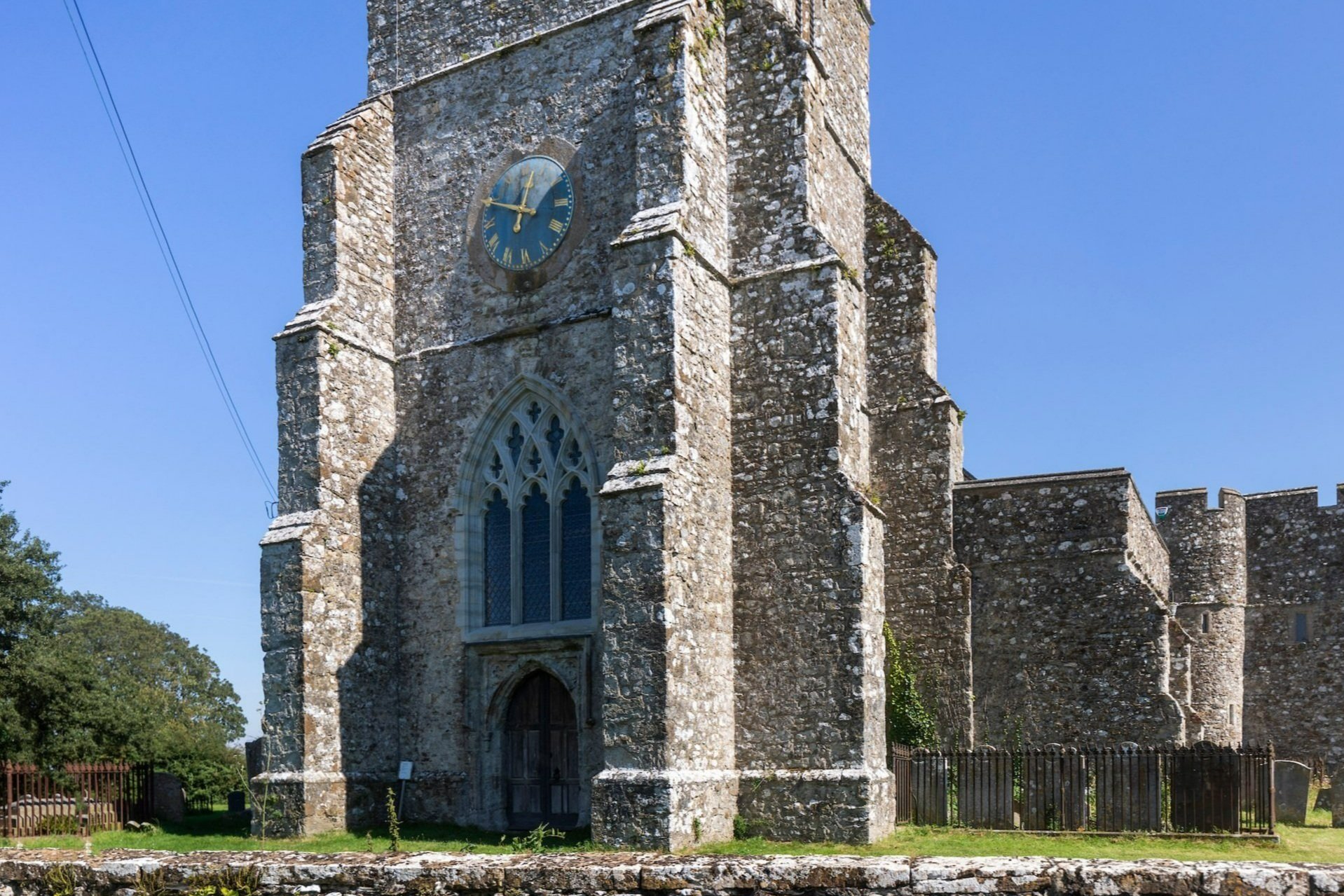
Project Case Studies
THE WEST WINDOW RESTORATION AT IVYCHURCH
The Romney Marsh Historic Churches Trust supported vital restoration work to the 550-year old west window at St George’s, Ivychurch. Over the years, the window had frequently been patched with repairs carried out in-situ. Following significant storm damage in 2008, it was noticed that the condition of the window had deteriorated to such an extent that a major restoration was required. This was the first total rebuild of a medieval church window in the Diocese of Canterbury.
Restoration photos by Celia Heritage, John Hendy and Andrew Linklaker.

BEFORE

AFTER
The Problem
In July 2008, a hail storm broke over 50 small panes of glass in the west end windows. The windows had been subject to so many repairs over the years that the structural integrity had become compromised and St George’s had been placed on Historic England’s “At Risk” register. The state of the window was such that the mullions (vertical window beams) and tracery (dividing stone bars or moudling) needed completely rebuilding. The hood moulds (stone projections that allow rain water to run off) and outer frame stones, also needed replacing. While some stones were technically in sufficiently good condition to be retained, it was decided that to keep them, while replacing other stones completely, would create a structural imbalance in the window. It was decided that a complete rebuild was necessary. No other medieval window in a parish church within the Canterbury Diocese had ever required a total rebuild of this nature.
BEFORE RESTORATION WORK:
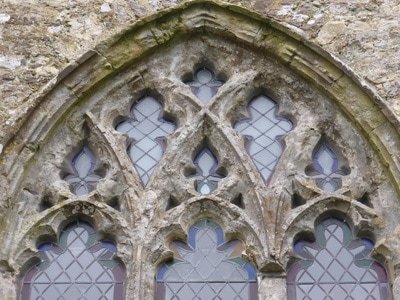
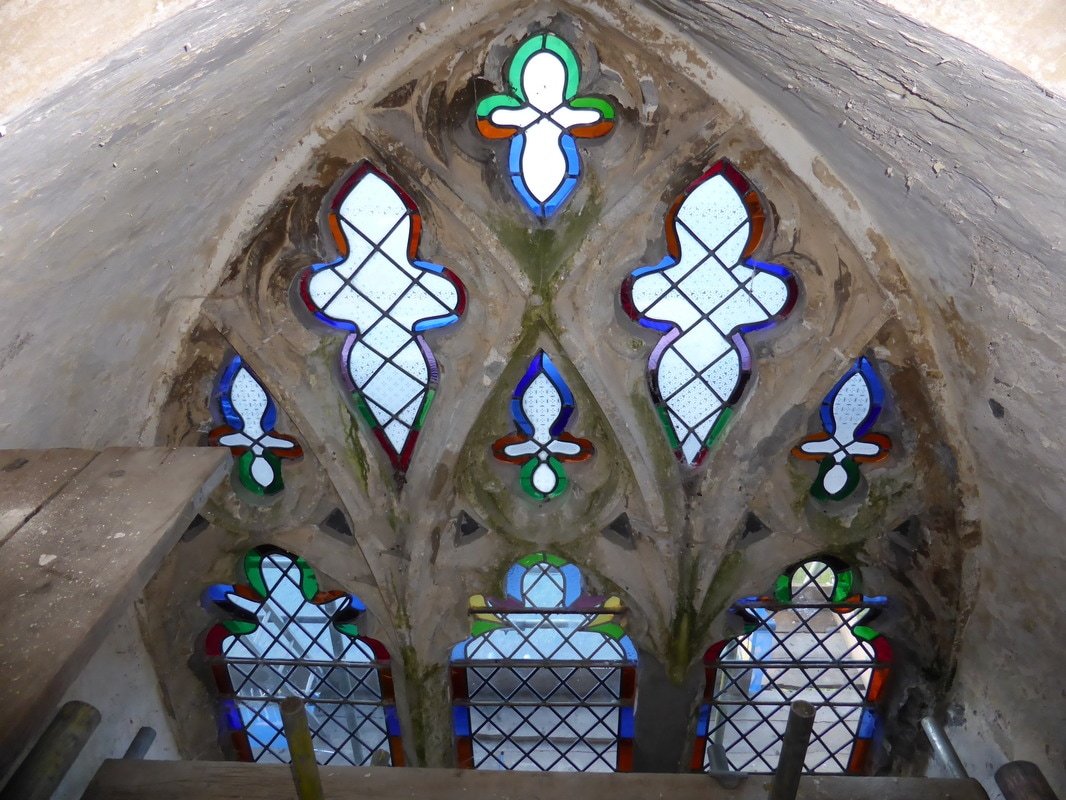



Interior view from the west window before restoration work. The space was significantly darker.

Undated photograph from the church archive showing the west window and church school benches.

Ivychurch west window in 1898.
The Intervention
The restoration would be authentically carried out in Kentish ragstone and new visitor facilities would be added at the same time. It was also decided to replace the coloured, poor-quality window glass which had been installed some time in the 1970s and replace it with better-quality plain glass. Unfortunately the project suffered several days, partly due to difficulty in locating a good quality seam of ragstone to match the original window stone, but also due to finding sufficient funding. Following local fundraising efforts, the go ahead was finally given in 2016 thanks to funding from both the Heritage Lottery Funding and The Romney Marsh Historic Churches Trust. Work began in January 2017. Deconstructing and rebuilding the window authentically was a huge undertaking. Each piece of stone was carefully labelled and the final window comprises 50 individual pieces of stone. They fitted faultlessly into the empty window frame - testament to the skill of those involved. All work was finally completed by December of that year, when the new window glass was installed.
REMOVING THE OLD WINDOW:

Stone been removed to show the window reveal.






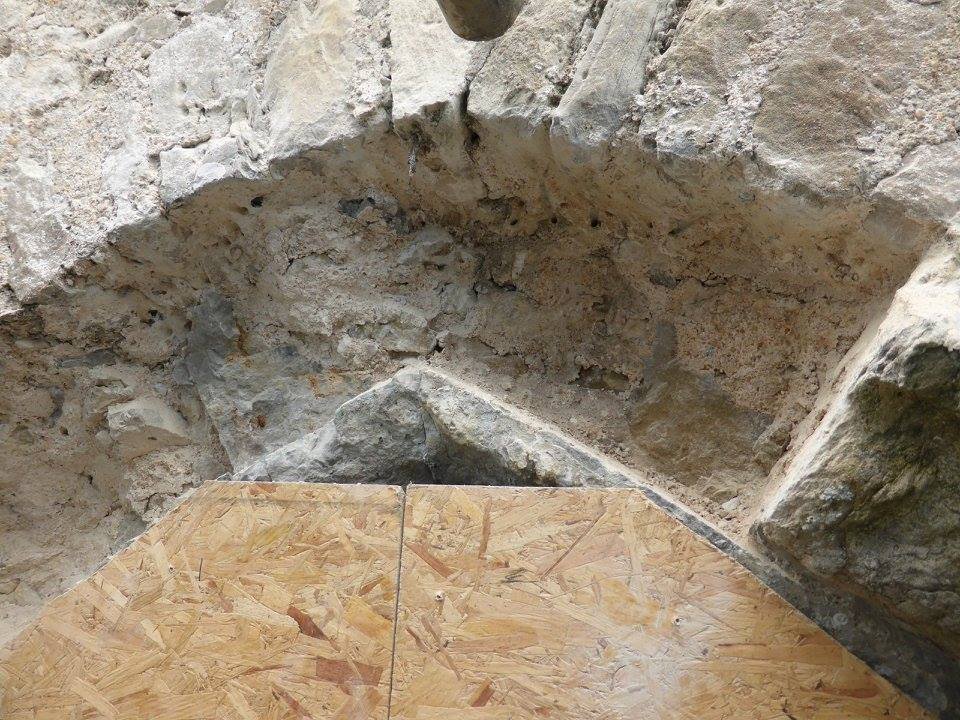
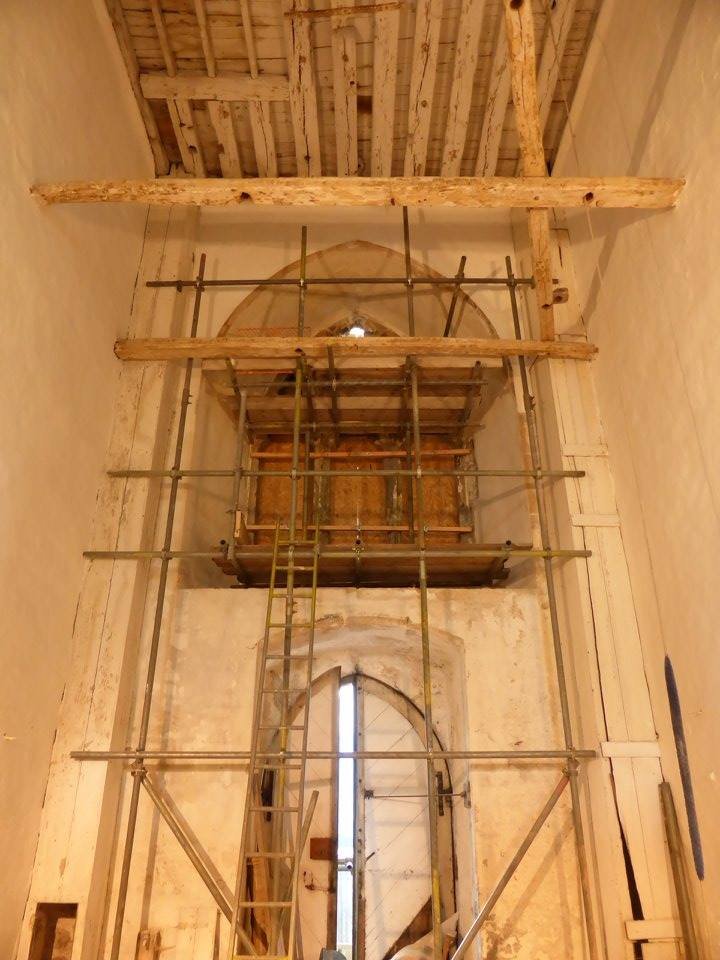
A Mystery Solved!
The origins of the tower window were a mystery for many years - a Decorated style window had been inserted into a Perpendicular style tower and the question was asked whether the window had been recycled. When the window was removed for the restoration work, the masons were impressed by the way that the frame had been locked into the tower structure, with no tell-tale signs of it having been used second-hand from anywhere else. The original West Window is thought to have dated back to the 15th century. Some of the better pieces of the original window are now on display in the north aisle's museum area.
REPLACING THE WINDOW:
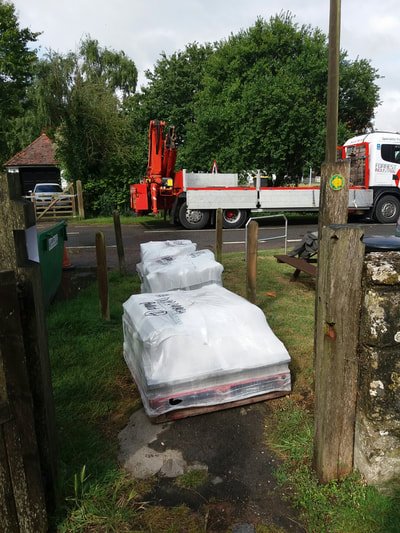


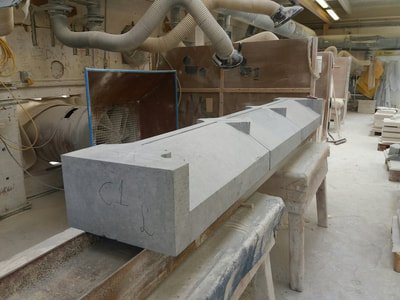
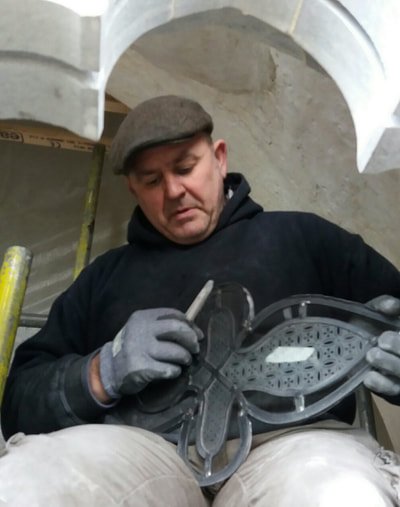


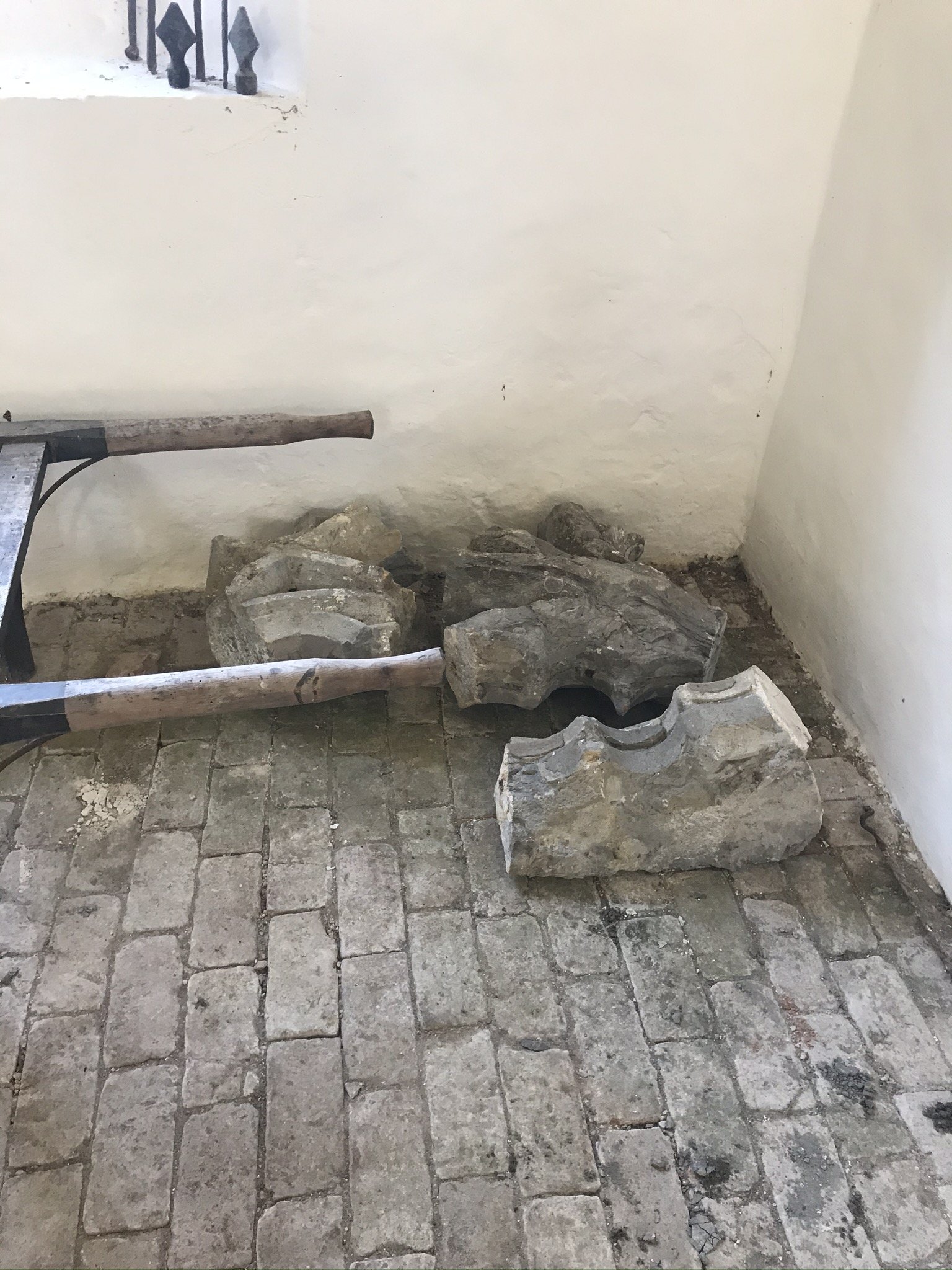
Pieces of the original window on display today.
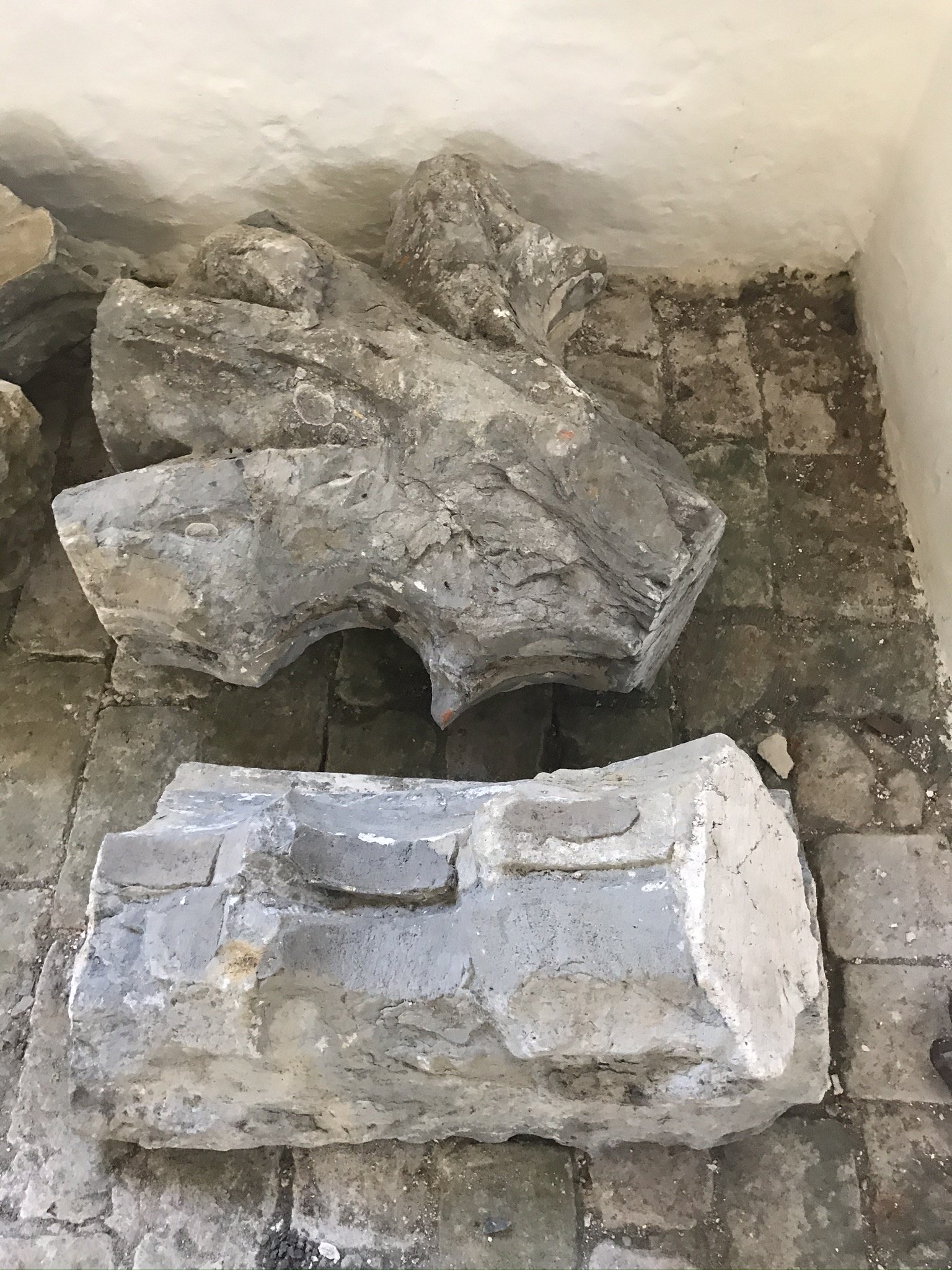
Pieces of the original window on display today.
The Lasting Impact
With improved kitchen facilities and toilets, the church now regularly hosts a large number of events. The church is a regular venue for concerts, performances, exhibitions and talks for the annual JAM On The Marsh festival. The new west window ensures the tower as a whole is now structurally sound; particularly important for this large, heavy tower built on marshy ground. Now containing clear plain glass, the west window helps illuminate the large interior of the church, enhancing the open and spacious feel of the nave and making this a particularly attractive space. The support of The Romney Marsh Historic Churches Trust and its members has helped ensure this church will be around for future generations.
A LIGHTER, BRIGHTER CHURCH, ACCESSIBLE TO ALL:
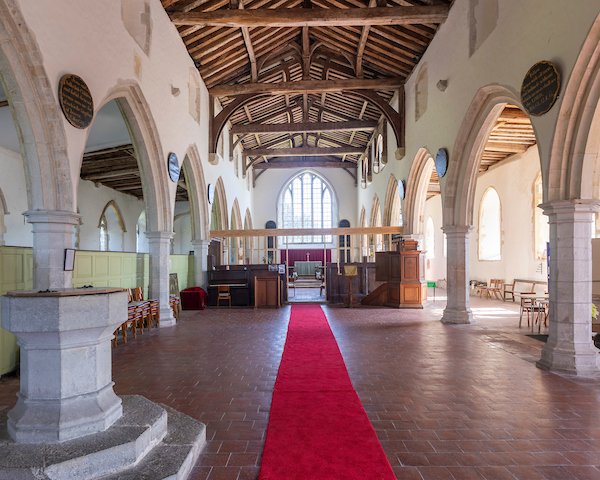
A brighter interior with improved facilities
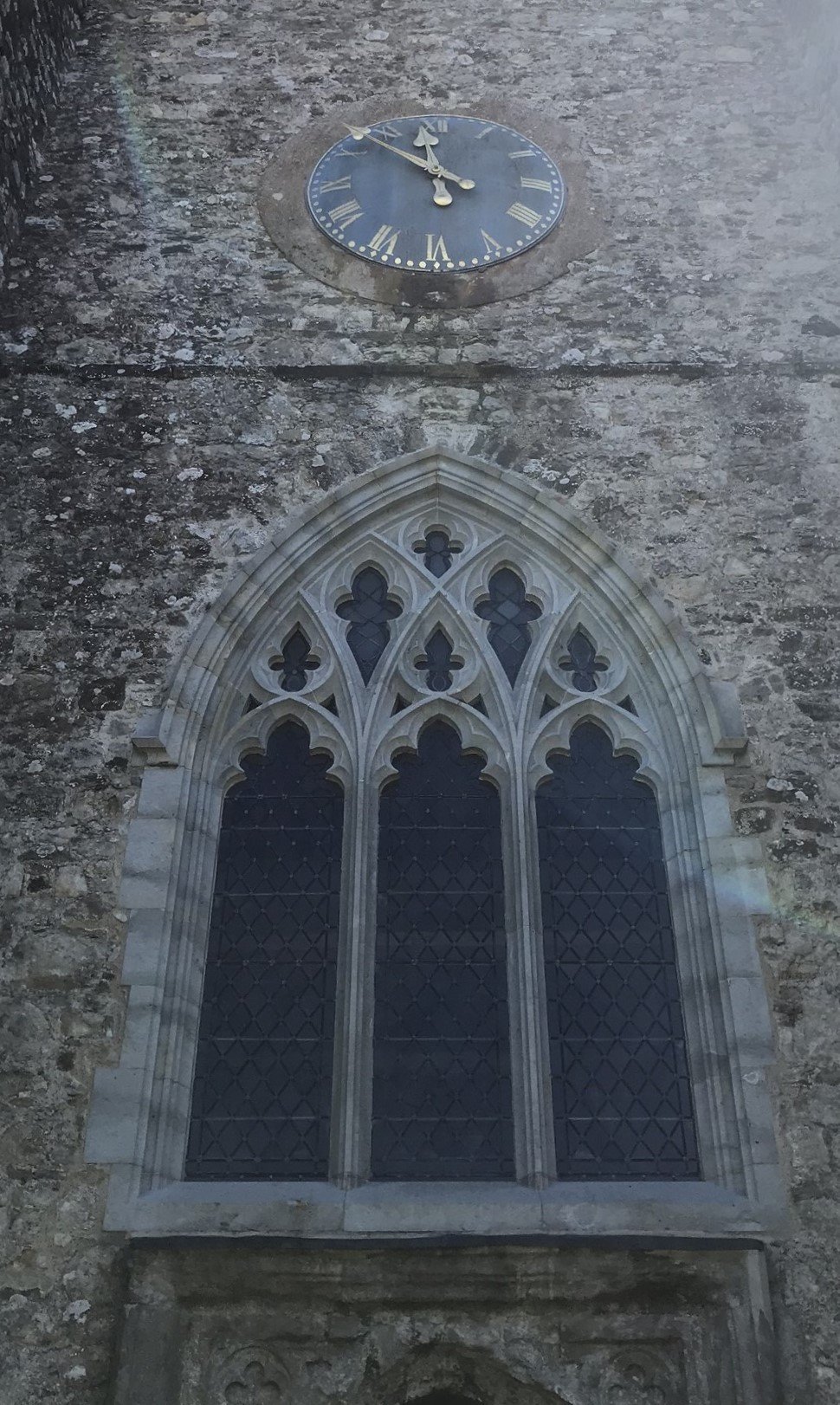
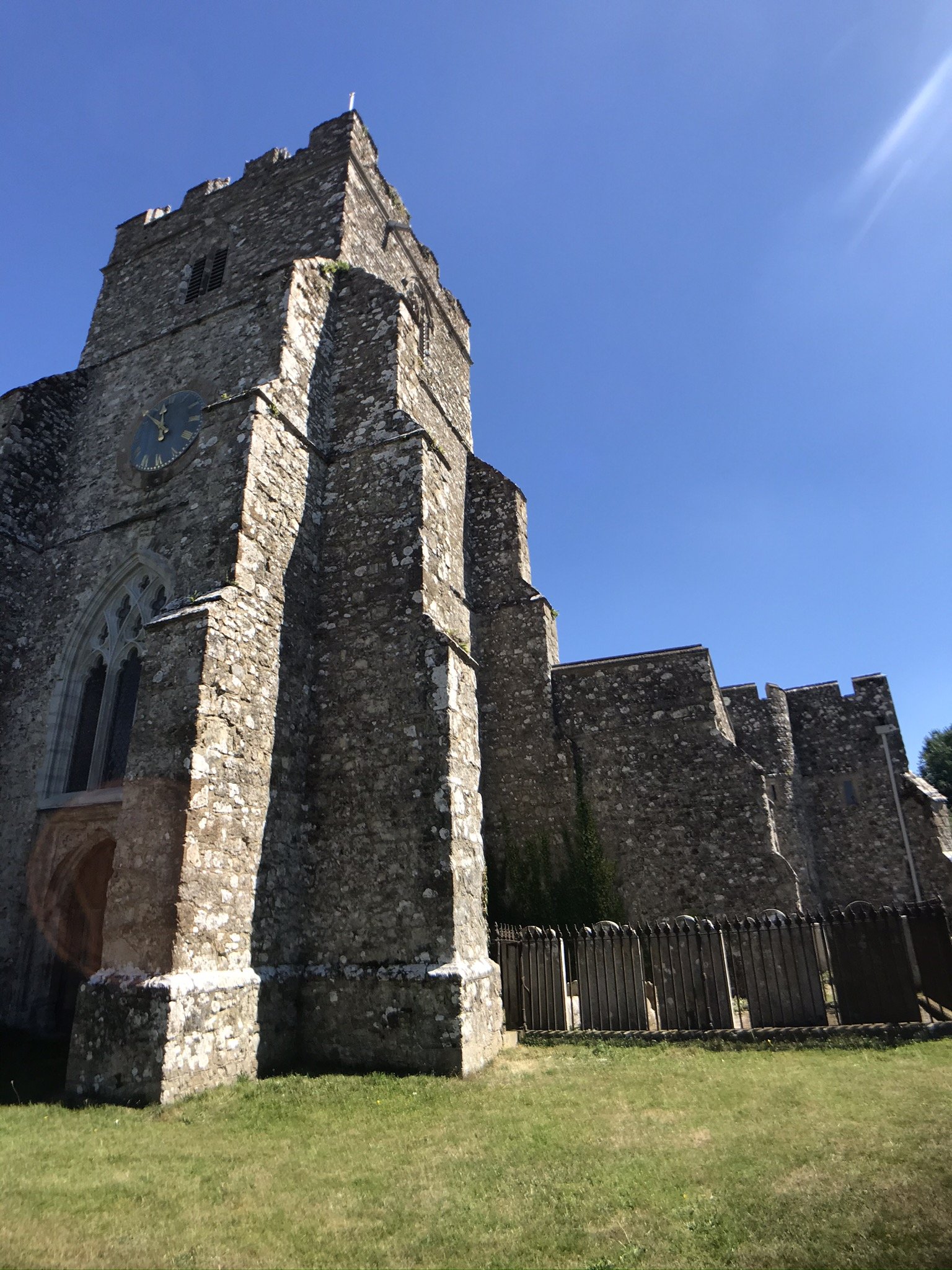

Workshops at Ivychurch for The Marsh Mosaics
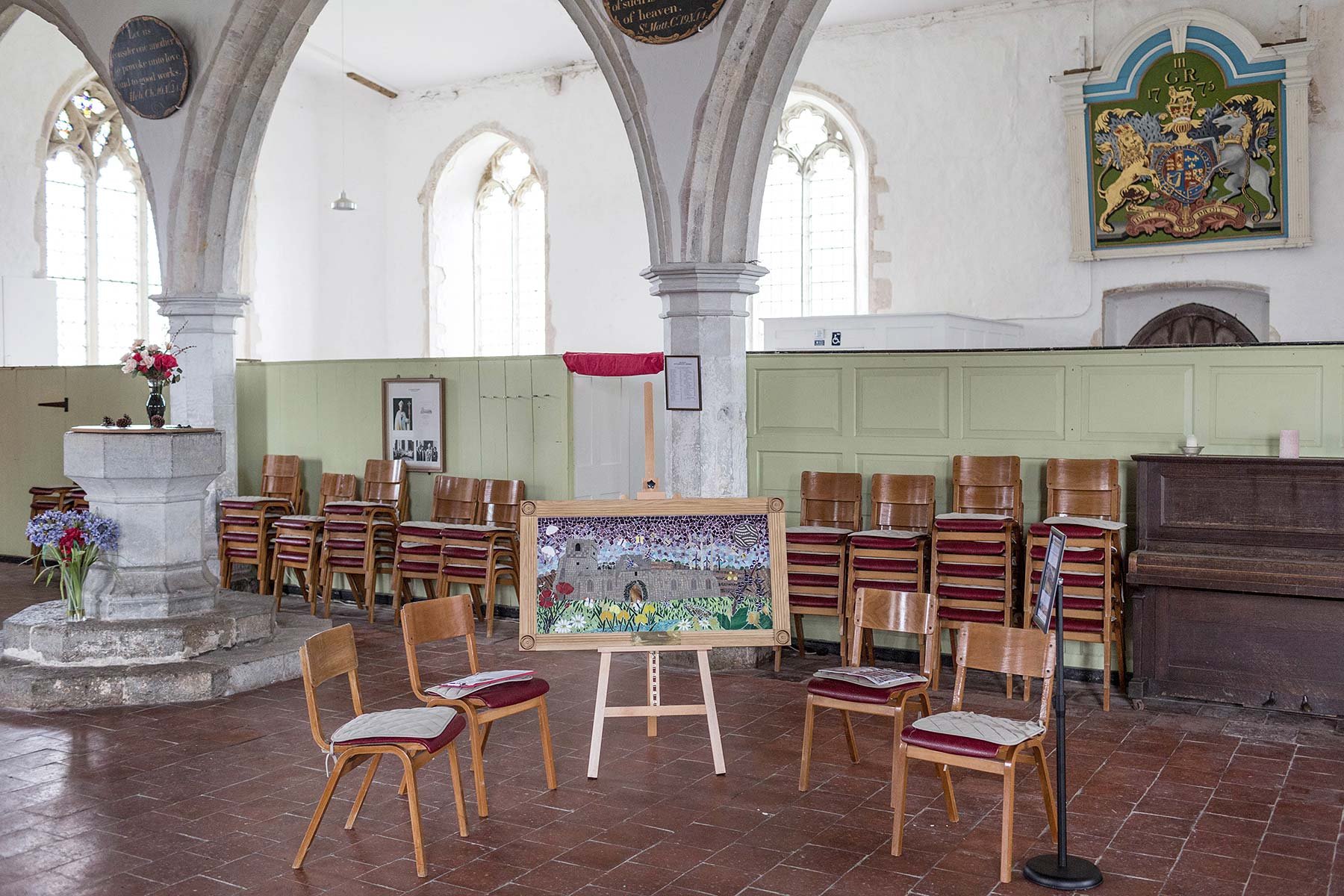
Light from the restored west window illuminates the space
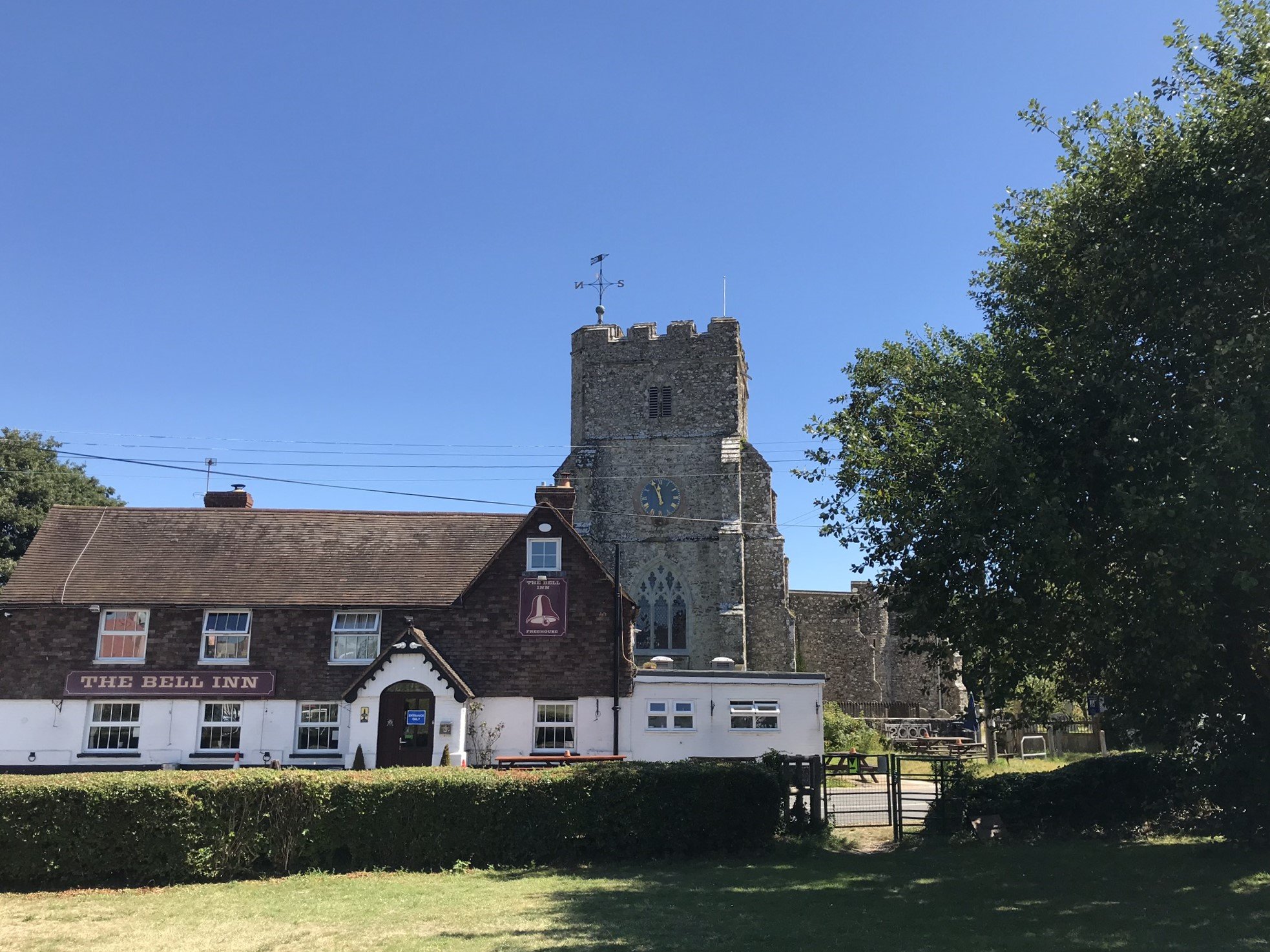
The Bell Inn has an attractive garden which looks onto the church.
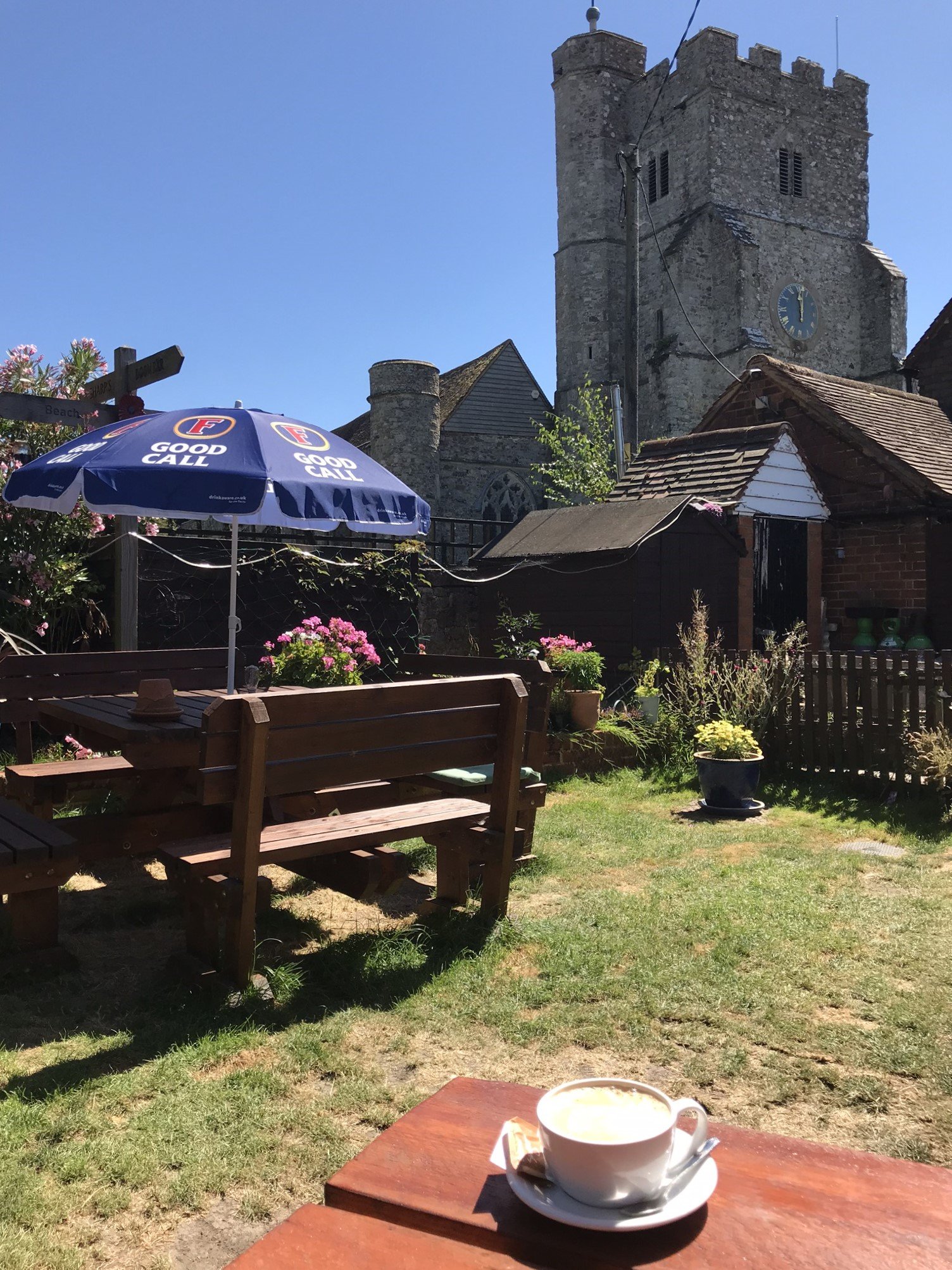
The Bell Inn has an attractive garden which looks onto the church.
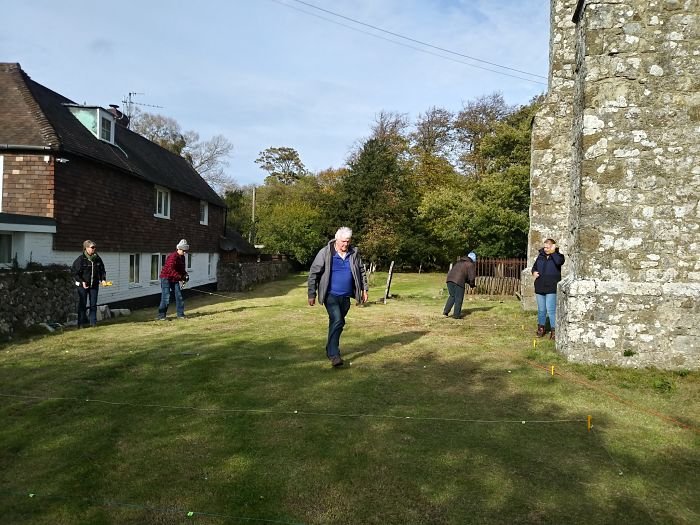
Community volunteers undertake an archaeological survey at St George's

Click for Rye News article (photo by Kenneth Bird)
Did You Know?
Due to its size, maintaining this large church has been a challenge over the centuries. A record dated 1758 shows that only 54 people lived in Ivychurch at this time and occupied 18 houses. Church attendance during winter months was less than ten and sometimes as low as three or four. During periods of neglect, the church like many others on the marsh, was used to store smuggled contraband.
In the Victorian era, the noted Arts and Crafts designer and architect Reginald Blomfield, who lived in Rye, is said to have restored the church with kindness. He claimed that St George's was one of the finest complete examples of 14th century craftsmanship and the best example of church architecture in the whole district.
By the start of the 20th Century, the church was in ruin again, with twenty large holes in the roof and infested with vermin. Broken windows were stuffed with hay to keep the rain out. The old box pews had rotted and were removed, creating the large open space you see today. Various attempts were made to bring the church back from ruin throughout the 20th century. Unfortunately a destructive lightning strike in June 1916 further damaged the west window - the force was such that stones were hurled into the nave and some even reached as far as the chancel.
The church suffered a further blow during the second world war when, on 13th October 1940, six high explosive bombs landed on the village and smashed windows in St George's. The Rectory was also hit on 15th June 1944, while on 4th July in the same year a V1 flying bomb caused further damage to the church and six houses. The church was in a terrible state of disrepair after the war. It was closed for services for several years until major repairs were made to the roof and windows in 1948.
Thankfully, since the second half of the 20th century, much work has been carried out to conserve the church.
Why a Kentish Ragstone window?
A band of ragstone runs right through the county of Kent following the line of the North Downs, from Folkestone at the coast, westwards past Maidstone and Sevenoaks and into neighbouring Surrey. Ragstone is a rough, hard limestone and was first used by the Romans and later adopted by the Normans. Famous ragstone buildings include Westminster Abbey and the Tower of London. It was called “ragstone” by the quarrymen because it would break along ragged edges, but its geological name is Lower Greensand. On Romney Marsh there is no local stone, so huge quantities were brought from elsewhere. The church at Ivychurch also includes Caen stone, a soft pale limestone from Normandy in France, as well as wave-rolled pebbles (flint) brought from the coast. The stone for the restored west window was quarried at Hermitage Quarry at Barming, near Maidstone.
More about St George’s
IVYCHURCH
3D Virtual Tour preview, showing restored western window and fragments of original stone.
More photos of St George’s, Ivychurch

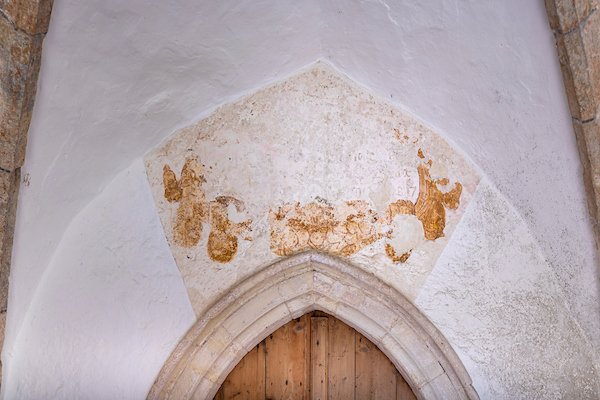

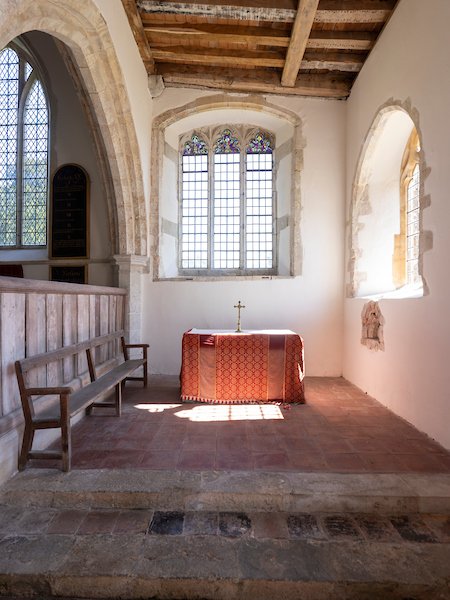

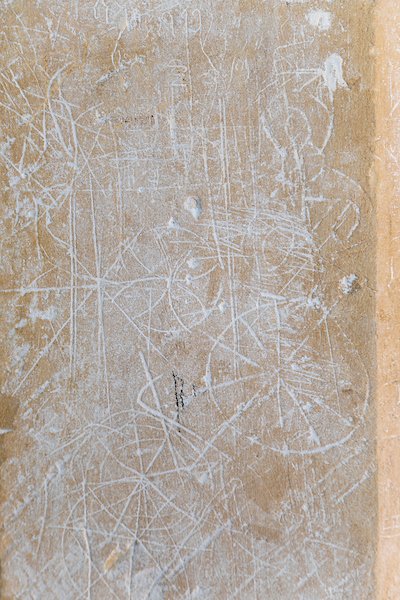
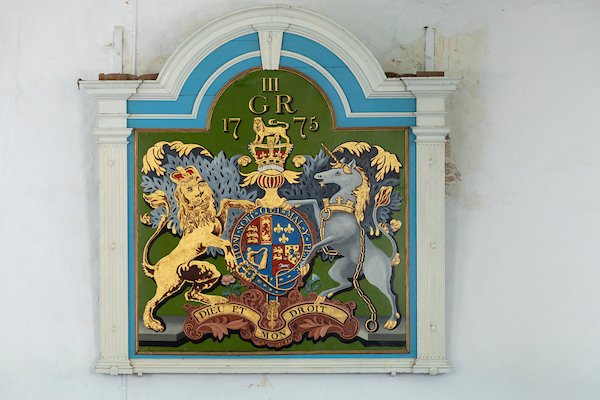
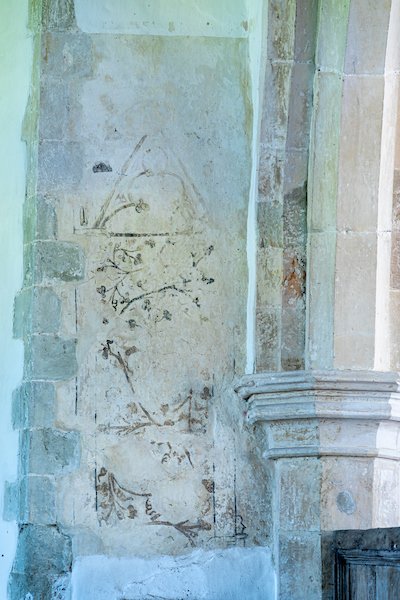



Audio Guide
Discover more about St George’s Church at Ivychurch with our new self-guided tour. Scan the QR code on your mobile device or click the tour button to view online.
Listen online
An audio-only version of the tour is also available to listen to here.
